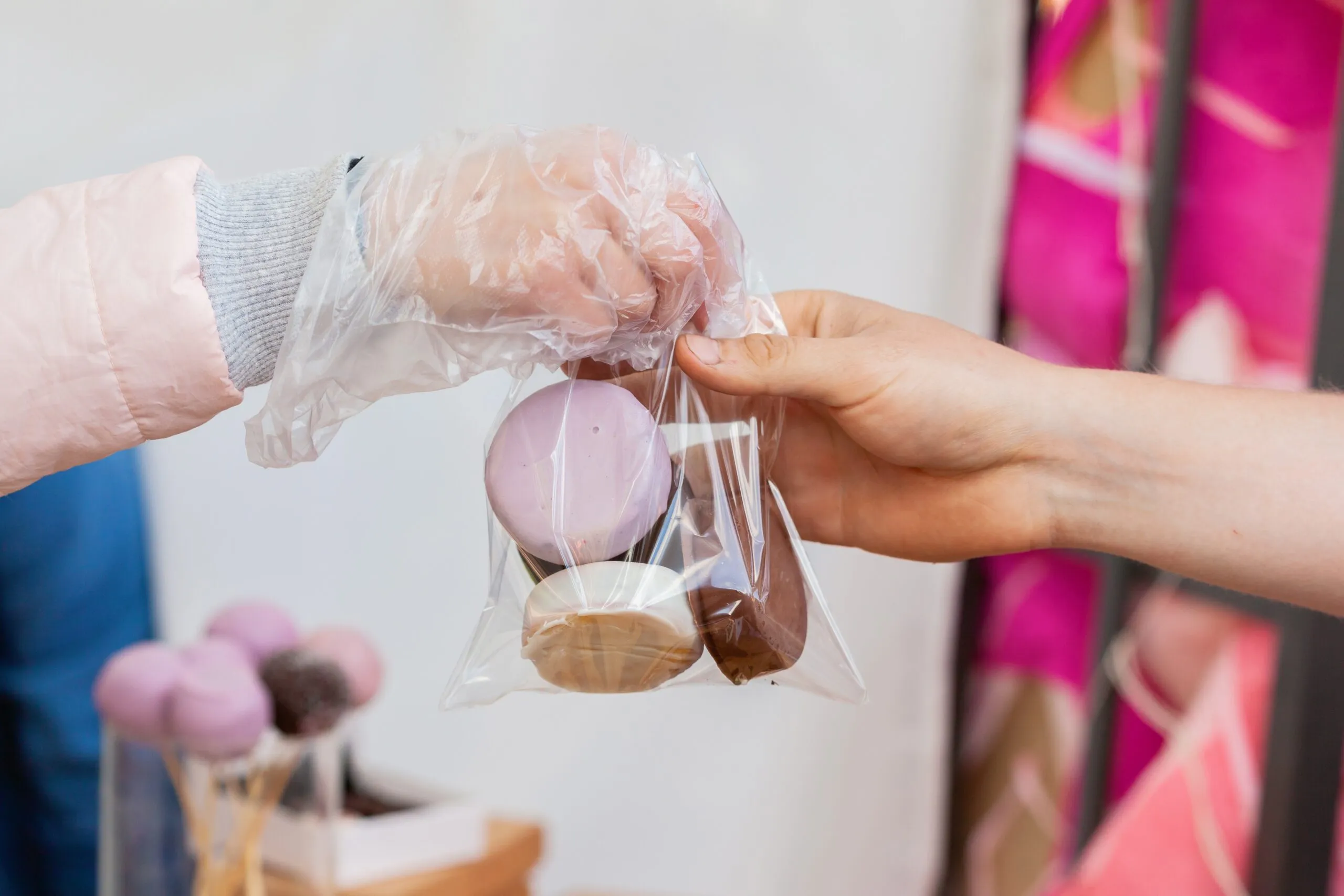

The food industry makes extensive use of plastics. They include packaging, wraps, containers, kitchenware, and baby bottles.
Food is more easily accessible and physically safe thanks to plastic packaging.
During delivery, storage, and transportation, this plastic-made food packaging guards against contamination and damage.
Since plastics have become an essential part of our everyday lives, it is crucial to understand them and the safety and appropriate handling of plastic items.
Petrochemicals, composed of carbon-containing molecules known as polymers, are the primary source of plastics. These polymers are smaller monomers, carbon-containing molecules, and repeating units.
Different kinds of plastics with various qualities and characteristics may be produced by using different arrangements of monomers within the polymer or different types of monomers.
Different types of plastic bags are available on the market, such as LDPE plastic bags, clear plastic bags, HDPE bags, and oxo-biodegradable plastic bags.
Let’s explore these different types of plastic food packaging options in detail.
Based on the substance from which they are formed, there are many distinct kinds of plastic films with radically different properties. The lidding film, shrink wrap, VSP film, stand-up pouches, and clear plastic bags are a few of the most popular constructions.
Plastic films generally provide a lot of advantages. The majority of the time, it is contaminant-resistant and lightweight. The majority of plastic films may be printed on, which aids in enhancing aesthetics and brand awareness.
The purpose of having this much variety in plastic films is to support different types of requirements of not only the food packaging industry but also other sectors. The most popular polymers used to create plastic films are listed below:
The most commonly used polyethylene film for food packaging is HDPE. It is very solvent-resistant and semi-translucent.
The least flexible and durable polyethylene film is HDPE, ideal for uses where it must maintain its form. Examples of use are containers for milk, juice, or water, margarine and butter tubs, cereal box liners, retail bags, and shopping bags.
The cheapest price material for plastic films is LDPE. It has strong moisture resistance, ripping, and chemicals and is clear, soft, malleable, flexible, and shiny. LDPE plastic bags are quite common but are also extensively utilized in flexible lids, squeezable food bottles, and frozen and bread packing.
MDPE is less often utilized than the other varieties of polyethylene flexible plastic sheeting. It is oxygen permeable, stronger than LDPE, and more resistant to rips, punctures, and chemicals. Baked foods, heavy-duty produce bags, wash bottles, and dispensing bottles are all packaged using MDPE.
PVC is a low-cost thermoplastic that has a wide range of uses. It has great impact strength, excellent dimensional stability, is oxygen permeable, and functions as a barrier to oil and grease.
It may be either stiff or flexible. PVC is used to make blister packaging for gum or breath mints and tubing for food and beverage applications.
A few metal salts and petroleum-based basic ingredients are used to make oxo-biodegradable plastic. Plastic’s molecular structure may degrade when exposed to heat and oxygen, thanks to the metal.
The plastic will reach a stage where bacteria can break it down. By doing this, the deterioration is sped up from millennia to a few months or years. Once completely broken down, the plastic turns into carbon dioxide, water, and biomass.
Because it doesn’t disintegrate via a biological process, oxy-biodegradable plastic is commonly referred to as “degradable” plastic.
The most popular applications of the oxo-biodegradable polymers are oxo-biodegradable plastic bags.
Oxo-biodegradable polymers are commonly employed in various applications, from short-lived goods like bread wrappers that last a few months to robust shopping bags anticipated to last five years or more.
The environments in which they will likely be disposed of may also range from cold, damp, and humid to hot, dry, and desert environments.
It is up to the businesses making or using the items to evaluate the test findings, determine if the material is appropriate for particular uses and circumstances, and promote it.
A wide range of plastic polymers is available to make different plastic bags. Various types of plastic bags, like HDPE bags and LDPE plastic bags discussed throughout this article, are used to fulfil different requirements of the food packaging industry.
Whether you want to just wrap a food item or find a clear plastic bag for shopping purposes, you can find different types of plastic bags that fulfil your needs and get the best results.